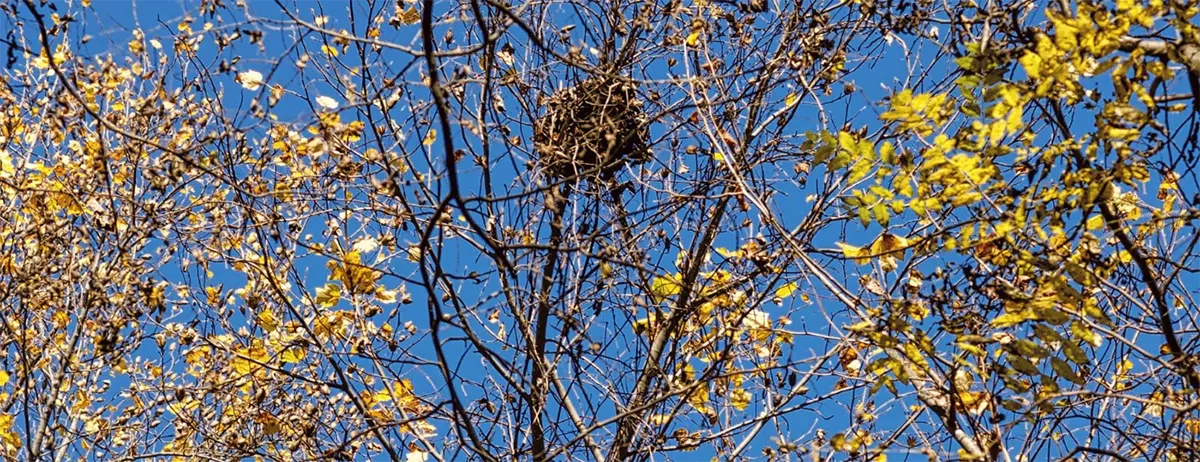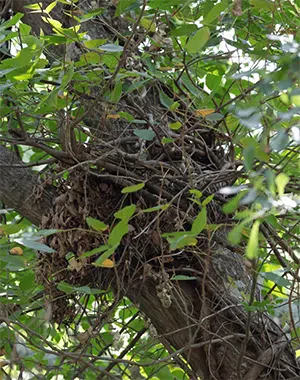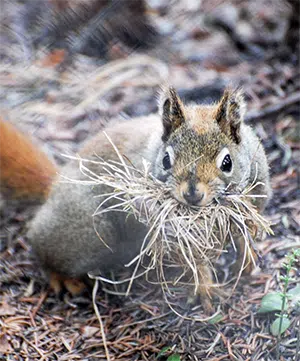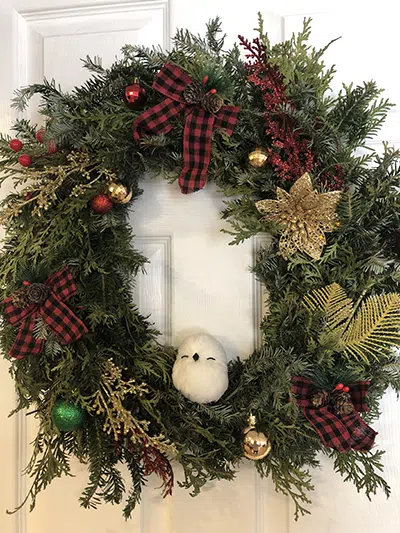Squirrels are actually quite fascinating. If you've spent any time watching them, you probably realize that you've got your very own Cirque du Soleil in your backyard. These little aerial acrobats can jump10 times their body length and turn their ankles a dizzying180 degrees, thus enabling them to change direction on a dime. Squirrels are smart little critters and keen observers; they learn by watching. It is also true that squirrels are truly master architects when it comes to building their nests - or dreys. Join us as we take a closer look at squirrel habitat and squirrel behavior.

The Basics of Squirrel Nests
Like all mammals, squirrels desire and, in fact, need a place to call home - all wildlife homes need to provide shelter and protection from predators and a place to birth and raise wee ones. Depending on the species of squirrel and their habitats, their nests vary.
 Leaf Nests
Leaf Nests
Leaf Nests are called Dreys. They are intricate structures high up in a tree, and surprisingly strong. From the ground they may look like little more than a messy ball of leaves bunched up where two branches meet, but they actually make perfect summer or winter homes. Yes, squirrels either keep 2 residences or spend some time winterizing their summer home, come fall.
Summer Drey
A nest fit for summer fun is generally more shallow and lighter than that occupied during the cold months. Protection from weather isn't as big of a concern during the summer and let's face it, momma squirrel has lots on her mind as she is getting ready to welcome her offspring. She will start construction by collecting and strategically placing leafy small branches at the bottom of what will become her drey. Branches will be intertwined to not be blown to bits by a good gust of wind. Contrary to bird nests, squirrels will also wave leaves into their structure. Once satisfied, it's time for the furniture: Anything soft will do (even bits of cloth or other human accessories) but the staples include leaves, pine needles, grass, feathers, and moss.
Winter Drey
To move or not to move.. that is the question. Squirrels may decide to fortify and add on to the summer cottage, or say 'Nuts to this!' and move to a different location and start over. The winter home requires a bit more depth to help shield from wind and other unpleasant weather events. More leaves and materials are needed to fill in any gaps. Now, at this point our nifty squirrel may also have a look around for any abonded tree cavities to call home for the winter months. Squirrels do not hibernate - they stay active all winter long.
Cavity Nests
Tree cavities actually make fantastic nests. There is ample protection from the weather and it can be welll insulated with similar materials as used in a drey. Often, the work of a woodpecker can be expanded upon; the entrance may need a bit widening but that's what sharp teeth are for. A hollow tree also adds an extra layer of protection from larger predators and is usally a fair bit off the ground to enable a quick escape from ground predators as well. All in all, a cavity nest is a fine alternative to a traditional drey.
Ground Nests
Some species of Sciuridae family prefer to just go undercover altogehter. Our friend, the chipmunk, is such a character. Much like its tree dwelling relative, the chipmunk is also quite the little architect, He (or she) will burrow down to anywhere between 17inches and 30 inches and construct a main nest chamber at the end of a tunnel. It will be furnished with insulating materials such as grasses, leaves, moss, and other materials. The building site will often be below a pile of deadfall or other debris.
 Attic or Human Structure Nests
Attic or Human Structure Nests
Ah yes. Remember how we said earlier that squirrels are quite intelligent little creatures? Why deal with weather when you can move into a perfectly insulated, dark, and quiet attic? The little darlings have discovered that humans offer more than just bird feeders. Any self respecting squirrel will view loose shingles or any ever-so-tiny opening as a challenge, if not an invitation into your attic. After having gained entry, proper nest making will involve displacing your insulation an rearrange some wires to make a nice little spot and drag in some materials to line the nest.
The Purpose and Uses of Squirrel Nests
Shelter and Protection
A nest, no matter what kind, is a place of safety. Somewhere to retreat to when tired or frightened - out of harm's way. For tree squirrels this is high up in a tree, for ground dwellers it is underground - safe from predators and the elements.
Breeding and Raising Young
A nest also provides a place for a female to have and raise her young. The little ones will stay with their mum for about 12 weeks. After that, they are ready and free to venture out on their own. Squirrels are solitary animals, except during mating season.
Where Squirrels Build Their Nests
Tree Nests (Dreys)
Location, location, location! One must build (or find) a solid foundation if one wants to build a lasting home. In contrast to birds, squirrels will build their dreys close to the tree trunk and/or into a fork of 2 branches meeting - and this is solely to provide more strenth and support for the nest. Their drey will have a hole (or door) facing the tree trunk to scurry in and out.
Ground Nests
When ground squirrels look for a building site, they will often choose a spot below some pile of debris. It not only helps insulate from above, but also somewhat obscures the entrance. A hole in the middle of the lawn looks a lot more suspicious and obvious than a small opening amidst a brush pile.
Attic and Building Nests
While attics may be near perfect nesting spots for squirrels, they are far from perfect for the home owner and may incur costly repairs. Displaced insulation will likekly have a negative impact on your heating bill, but can also cause much more serious problems with your roof. Squirrels will also move and rearrange wires to make their cozy winter home, risking arcing and potential fires. And then there's poop and potential health hazards to deal with.
Dealing with Squirrel Nests on Your Property
Squirrels are a fact of life. And, not and entirely unpleasant one. Squirrels are super entertaining to watch and many people feel that they have a personal relationship with their backyard squirrel.
When to Remove a Squirrel Nest
Unless you are willing to climb to dizzying heights, tree nests - or dreys- are literally out of your reach. And, they are part of a squirrel's natural habitat - we should leave them be. A ground burrow may need dealing with if it threatens the foundation of your home or causes any other potential danger for humans or pets. Definitely the time for action is the day you discover that a squirrel has moved into your attic. This may prove to be a more challenging endeavor than expected. It may be time to call in the Professionals.
Humane Removal Techniques
To remove a squirrel from your attic, you would have to trap it. But before you do so, please ensure that there are no babies present. Also, before you release the squirrel, you MUST find and repair the point of entry.
How Hawkeye Can Help!
Hawkeye Bird & Animal Control is a leader in wildlife removal and management. We deal with humanely removing squirrels and prevent rodent nesting in attics frequently. Contact us today and evict that squirrel from your attic!














